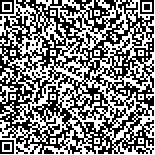下载中心
优秀审稿专家
优秀论文
相关链接
摘要

时空意义明确的森林干扰和恢复信息是评价森林生态系统碳动态的关键因素之一。然而由于诸多的现实困难,多尺度的森林干扰定量化时空信息相对缺乏。Landsat数据具备光谱、时间和空间分辨率上的优势,以及可以免费获取的特点,使其成为主要的长时间序列动态监测的遥感数据源之一,为长时间周期内提供具有合适的空间细节和时间频率的森林干扰信息成为可能。特别是基于Landsat时间序列堆栈(LTSS)的森林干扰自动分析算法的出现,更为森林生态系统的近实时监测提供强有力的工具。本文全面评述了长时间序列遥感数据准备和预处理技术以及国内外基于遥感数据源的多时相森林干扰监测方法,重点分析了基于Landsat的多种指数监测和自动化方法的优缺点,并总结了其与多源数据结合的扩展应用,最后就现有方法与国内外新的数据、技术手段的关联进行了展望,以期为推广中国本土卫星影像应用于森林干扰监测提供理论借鉴。
Spatio-temporally explicit forest disturbance information is regarded as a critical mechanism for net ecosystem productivity. However, quantitative and spatio-temporally explicit information on forest disturbance is currently rare for most regions of the world.
Unique among earth observation programs, Landsat data are systematically collected and archived following a global acquisition strategy. The provision of free, robust data products since 2008 has spurred a renaissance of interest in Landsat and resulted in an increasingly widespread use of Landsat Time Series (LTS) for multi-temporal characterizations. The science and application capacity of Landsat have developed steadily since 1972, with the increase in sophistication offered over time incorporated into Landsat processing and analysis practices. With the successful launch of Landsat-8, the continuity of measures at scales of relevance to management and scientific activities is ensured in a short time. The spatial, spectral, and temporal resolution offered by Landsat data is well suited, increasingly established, and operational in usage for forest management and analysis. Particularly, forest change detection algorithms based on LTS stack provide robust tools for detecting near real-time forest ecosystem changes, whereby a baseline of conditions can be determined for both abrupt and gradual changes and attributed to different drivers. Interest in LTS has been further enhanced by the recent introduction of several novel automated data processing techniques suitable for multi-temporal analysis, especially after the successful launch of highly spatio-temporal resolution satellites. The benefits are enabled by data availability, analysis-ready image products, increased computing power and storage, and sophisticated image processing approaches. Thus, change detection research for forest disturbance with time series remote sensing data has entered a brand-new stage.
This review systematically summarizes the research progress and application of multi-temporal forest disturbance monitoring methods based on remote sensing data sources. Considering the significance and advantage of applying time series analysis in change detection, data availability selection, and data processing, various spectral indexes and dense time automatic monitoring methods for forest disturbance are analyzed extensively, and the characteristics of multi-source data and algorithms are summarized. Finally, the improvements based on the existing limitations are explored. At the time of this review, three forest disturbance change detection algorithms are commonly used for LTS:spectral variables, classification analysis, and trajectory analysis. Spectral-based techniques range from single-band reflectance to a host of indexes calculated from different algebraic manipulations of the original spectral bands and their derivatives. Classification-based techniques are an extension of traditional change detection techniques based on two-year images. Trajectory-based methods identify trends and breakpoints corresponding to disturbance events, stability, and recovery time, and they are useful for characterizing different disturbance regimes. The strength and limitations of each method prior to conducting an LTS analysis should be understood by forestry and remote sensing communities, who should ideally select a given method depending on their information needs. In summary, unprecedented advances in the assessment of forest disturbance have been realized in recent and future years using LTS data combined with other high spatial and temporal resolution imagery, especially domestic satellites as information sources.

